Cheol-Ho Cho
Mitigating Semantic Collapse in Partially Relevant Video Retrieval
Oct 31, 2025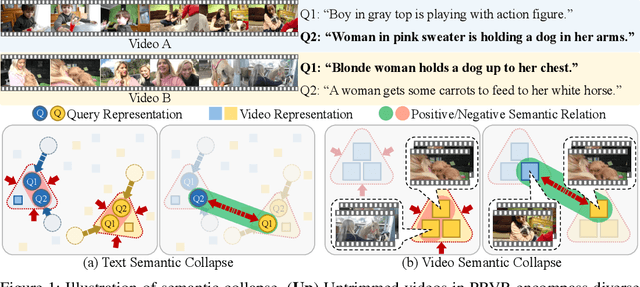
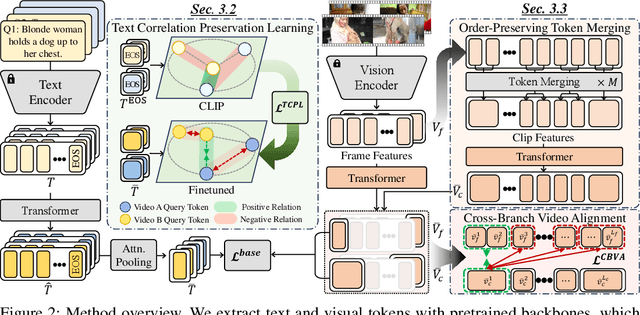


Abstract:Partially Relevant Video Retrieval (PRVR) seeks videos where only part of the content matches a text query. Existing methods treat every annotated text-video pair as a positive and all others as negatives, ignoring the rich semantic variation both within a single video and across different videos. Consequently, embeddings of both queries and their corresponding video-clip segments for distinct events within the same video collapse together, while embeddings of semantically similar queries and segments from different videos are driven apart. This limits retrieval performance when videos contain multiple, diverse events. This paper addresses the aforementioned problems, termed as semantic collapse, in both the text and video embedding spaces. We first introduce Text Correlation Preservation Learning, which preserves the semantic relationships encoded by the foundation model across text queries. To address collapse in video embeddings, we propose Cross-Branch Video Alignment (CBVA), a contrastive alignment method that disentangles hierarchical video representations across temporal scales. Subsequently, we introduce order-preserving token merging and adaptive CBVA to enhance alignment by producing video segments that are internally coherent yet mutually distinctive. Extensive experiments on PRVR benchmarks demonstrate that our framework effectively prevents semantic collapse and substantially improves retrieval accuracy.
Prototypes are Balanced Units for Efficient and Effective Partially Relevant Video Retrieval
Apr 17, 2025Abstract:In a retrieval system, simultaneously achieving search accuracy and efficiency is inherently challenging. This challenge is particularly pronounced in partially relevant video retrieval (PRVR), where incorporating more diverse context representations at varying temporal scales for each video enhances accuracy but increases computational and memory costs. To address this dichotomy, we propose a prototypical PRVR framework that encodes diverse contexts within a video into a fixed number of prototypes. We then introduce several strategies to enhance text association and video understanding within the prototypes, along with an orthogonal objective to ensure that the prototypes capture a diverse range of content. To keep the prototypes searchable via text queries while accurately encoding video contexts, we implement cross- and uni-modal reconstruction tasks. The cross-modal reconstruction task aligns the prototypes with textual features within a shared space, while the uni-modal reconstruction task preserves all video contexts during encoding. Additionally, we employ a video mixing technique to provide weak guidance to further align prototypes and associated textual representations. Extensive evaluations on TVR, ActivityNet-Captions, and QVHighlights validate the effectiveness of our approach without sacrificing efficiency.
Prediction-Feedback DETR for Temporal Action Detection
Aug 29, 2024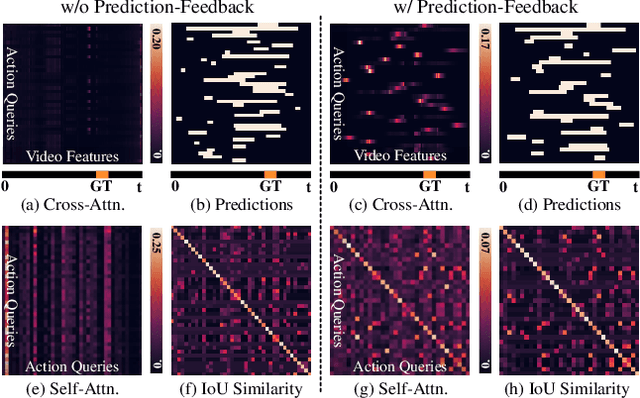
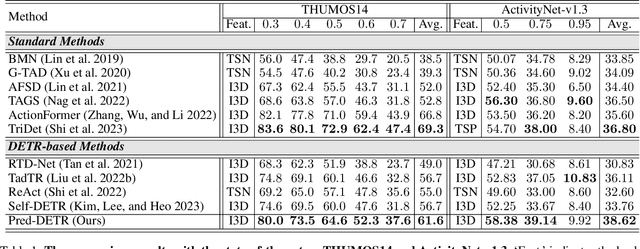

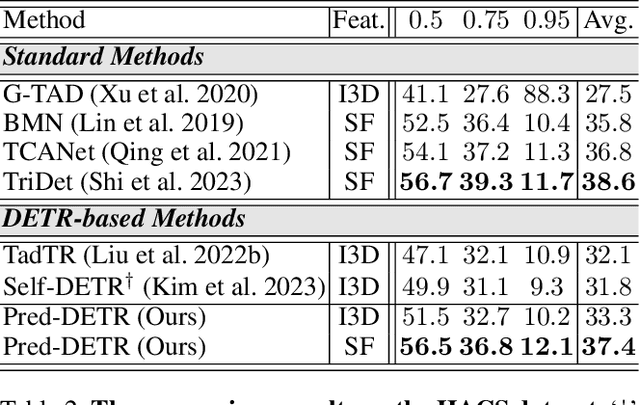
Abstract:Temporal Action Detection (TAD) is fundamental yet challenging for real-world video applications. Leveraging the unique benefits of transformers, various DETR-based approaches have been adopted in TAD. However, it has recently been identified that the attention collapse in self-attention causes the performance degradation of DETR for TAD. Building upon previous research, this paper newly addresses the attention collapse problem in cross-attention within DETR-based TAD methods. Moreover, our findings reveal that cross-attention exhibits patterns distinct from predictions, indicating a short-cut phenomenon. To resolve this, we propose a new framework, Prediction-Feedback DETR (Pred-DETR), which utilizes predictions to restore the collapse and align the cross- and self-attention with predictions. Specifically, we devise novel prediction-feedback objectives using guidance from the relations of the predictions. As a result, Pred-DETR significantly alleviates the collapse and achieves state-of-the-art performance among DETR-based methods on various challenging benchmarks including THUMOS14, ActivityNet-v1.3, HACS, and FineAction.
Difficulty-Aware Simulator for Open Set Recognition
Jul 20, 2022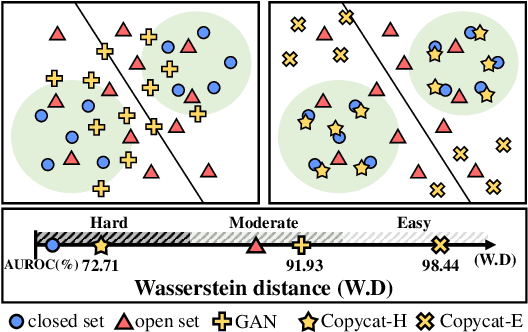
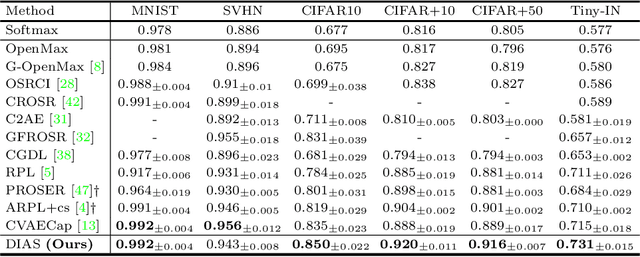
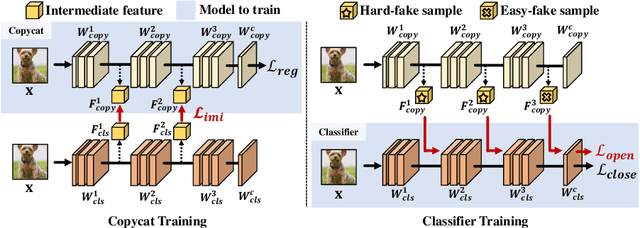

Abstract:Open set recognition (OSR) assumes unknown instances appear out of the blue at the inference time. The main challenge of OSR is that the response of models for unknowns is totally unpredictable. Furthermore, the diversity of open set makes it harder since instances have different difficulty levels. Therefore, we present a novel framework, DIfficulty-Aware Simulator (DIAS), that generates fakes with diverse difficulty levels to simulate the real world. We first investigate fakes from generative adversarial network (GAN) in the classifier's viewpoint and observe that these are not severely challenging. This leads us to define the criteria for difficulty by regarding samples generated with GANs having moderate-difficulty. To produce hard-difficulty examples, we introduce Copycat, imitating the behavior of the classifier. Furthermore, moderate- and easy-difficulty samples are also yielded by our modified GAN and Copycat, respectively. As a result, DIAS outperforms state-of-the-art methods with both metrics of AUROC and F-score. Our code is available at https://github.com/wjun0830/Difficulty-Aware-Simulator.
 Add to Chrome
Add to Chrome Add to Firefox
Add to Firefox Add to Edge
Add to Edge